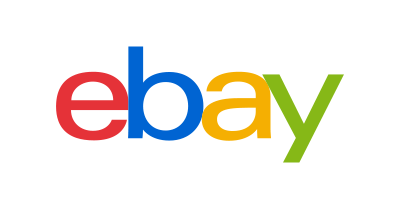Selling on eBay is one good way to earn extra and supplement your income. With 187 million users worldwide, eBay provides a platform for sellers to reach a wide audience and offer a variety of products.
In this article, we will provide a step-by-step guide on how to sell on eBay. We’ll also address common concerns such as profitability, the fulfillment process, the fees involved, and whether it’s all worth the effort.
With the right knowledge and dedication, you can start selling items on eBay and earning an income quickly.
MORE: eBay Statistics

Make Money Selling on eBay!
Selling on eBay: Step-By-Step Guide
It can be intimidating to start selling on eBay, but following these steps makes it easy to become an eBay seller.
- Consider what to sell,
- Register an eBay account,
- Calculate product pricing,
- Choose payment options,
- Create product listings,
- Monitor listings,
- Ship to buyer,
- Offer customer support,
- Manage sales and monitor performance.
1. Consider What To Sell
Are you aware that it is possible to list pre-owned and used items on eBay? This approach allows you to avoid unnecessary expenditure on newly acquired products.
But before searching among your personal things, determine what eBay shoppers are interested in. It would help to ask this question: What is the number 1 seller on eBay?
You can find the answer by visiting the website and selecting the ‘Best-Selling’ tab. The results will give you different categories. Just choose any of them and browse through the trending deals. Make a list of the same or similar items you might already own.
Once it is done, you are ready to initiate the search for your initial inventory. Go through your belongings and identify pieces you no longer need or use. Ensure they are in good condition, preferably in or with their original packaging.
If you have the time and desire, selling new items is always a good idea. Since you have already researched the platform’s bestsellers, you may proceed with sourcing the products.
You can use one of our recommended software for eBay marketing research.
MORE: Best selling eBay products
2. Register an eBay Account
It is simple and free to open an eBay account. As an individual seller, you simply need to provide your email address, contact address, phone number, and bank account details (for receiving buyers’ payments).
If you have an existing registered business, whether a sole proprietorship, partnership, or corporation, you may use it for eligibility for a Business Seller account. This requires additional information such as your enterprise’s name, type, address, and bank account details.
MORE: How to set up an eBay store
3. Calculate Product Pricing
When determining the price of your item, conduct your research and find out what similar items have sold on eBay. Use the platform’s Advanced Search function to do this. Then, set a competitive price that will attract buyers.
Remember to factor in your packaging and fulfillment costs to ensure a good profit for yourself.
MORE: Test our eBay Fee Calculator for free
4. Choose Payment Options
eBay takes care of processing payments on both ends of each transaction. As a seller, you only need to decide on payment methods you will accept. These are the options available on the platform:
- PayPal,
- PayPal credit,
- Debit or credit card,
- Apple Pay,
- Google Pay,
- Payment upon pick up (cash, check, money order).
MORE: How to ensure your make money on eBay
5. Create Product Listings
Use eBay’s listing tool to create a descriptive and eye-catching listing for your item. The following information is required when creating a product listing.
Photograph Your Item
Take clear, well-lit, and high-quality photos of your product from all angles. Include the original box or container, if available, as well as the packaging when possible.
Write a Product Description
A compelling product description will attract potential buyers. Provide detailed information and use keywords to improve visibility in eBay’s search results.
To avoid disagreements with buyers, be honest and accurate in your description, including any flaws or damage.
Choose the Appropriate Listing Format
Like any brand, marketplaces also find ways to differentiate themselves from the competition. eBay found its niche by offering these two types of listings:
Auction Style
This is what eBay is famous for. You set a starting price and duration for your listing, and potential buyers place bids on your item. The highest bid wins at the end of the listing duration.
Buy It Now
The fixed-price listing format allows you to set a specific price for your item. Buyers can purchase it immediately at that rate. With this format, you can sell quickly without waiting for bids.
6. Monitor Listings
Once your listings are live, monitor them regularly. You can do this in your seller account. Go to the Listings page, click on the title of any listing, and you will be redirected to that item’s Monitor Listing page.
Likewise, respond promptly to any inquiries or offers from potential buyers. eBay posts buyer messages in your seller account’s ‘My eBay: Messages’ section. To answer, you just click on the specific message. It will open on a new window, like a regular email page.
7. Ship to Buyer
Choose a reliable shipping method and package your items securely to ensure they arrive safely. Alternatively, eBay offers sellers the option to use its shipping services, which can simplify the process and provide discounted rates.
MORE: How to make a shipping label
8. Manage Sales and Monitor Performance
Since you’re considered a tenant on eBay, you must adhere to its policies. That includes maintaining a good standing as demonstrated in your seller performance. eBay measures it via metrics you can see on two seller dashboards:
- Seller Standards: for turnaround times of deliveries, defect rate (cancellations), and unresolved closed cases
- Service Metrics: your rates of return/refund due to items not received or not as described compared to your competitors
On the other hand, you can increase your eBay sales by optimizing your listings, pricing, and customer service to attract more buyers. Here’s how:
- Ensure you create attractive product pages with well-written descriptions, professional images, and accurate information.
- Check that your prices are competitive with other items similar to yours.
- Respond to buyers’ messages and resolve cases promptly.
Check out our list of recommended analytics tools that can help assist your growth as an eBay seller.
MORE: How to increase sales on eBay
How to Sell On eBay for Beginners
How easy is it to sell on eBay?
Selling on eBay can be a great way to make some extra money or even start a small business. The platform’s features are easy to navigate, and the policies are not highly restrictive.
Compared to other online marketplaces like Amazon or Walmart, eBay charges lower fees for sellers and is more geared towards individuals rather than businesses. On the other hand, it is perceived as less professional than platforms like Shopify, which makes it difficult to build a brand.
If you’re new to online selling, it may take some time to get the hang of it, but offers resources and eBay support to help you along the way. Ultimately, the level of ease will depend on the effort you put in and the demand for your items.
MORE: How to spot eBay scams
Is it Still Profitable to Sell on eBay?
As an eBay seller, it’s important that you fully understand the various fees involved in eBay selling.
The easiest way on how to sell on eBay for free is to know that your first 250 listings each month do not entail any fees. After that, there’s a $0.35 insertion fee per listing, which is based on the starting price of the item and may vary depending on the listing format and additional options.
Additionally, eBay charges a final value fee based on the selling price of the item, including shipping costs. This fee is typically around 10% of the total sale price.
However, if your item doesn’t sell, you don’t have to pay any fees.
As for shipping, the seller determines who pays for it. You can either offer free shipping or have your buyer shoulder the expense. If you choose the latter, be sure to provide accurate shipping costs so your customer is not surprised by the final price.
Also, choose a shipping method that provides tracking and insurance to protect both you and the buyer.
MORE: eBay fee calculator
Is Selling on eBay Worth it?
Yes. Compared to other online marketplaces, eBay offers these unique features:
1. Option to list old or used items: From vinyl records to Barbie dolls, the list of antique, vintage, and collectible items for sale on eBay is long.
2. Selling by auction: This sought-after attribute of the platform is one of its major attractions for both sellers and buyers.
3. Sell literally anything: Not just heirloom pieces but also cars, lots, appliances, and boats.
4. More photos for listings: You are allowed to add up to 24 images in your product listings.
5. Adding videos and editing images: Being able to use videos and enhance product photos makes your listings more enticing.
6. Blocking buyers: There are several reasons sellers choose not to engage with buyers. The two most common ones are to discourage buyers from a country where you don’t ship items and to avoid a repeat of negative encounters with past customers.
7. Charity option: Sellers can set up automatic donations to organizations, which eBay matches with a final value fee discount.
MORE: eBay statistics
Key Takeaway
Selling on eBay can be a rewarding venture if done correctly. Staying informed about the platform’s fee structure and policies will ensure that you maximize your profits and provide a positive buying experience for your customers.
Your success on this platform comes with persistence, customer satisfaction, and adapting to changing market trends. And with this guide, you have the tools you need to get started. See where it takes you as an eBay seller.

Leave a Reply